The document outlines the syllabus for Unit 4 which includes topics on software testing strategies, product metrics, and debugging. It discusses black box and white box testing approaches, validation testing, system testing, and debugging techniques. It also covers product metrics for analysis, design, source code, testing and maintenance. Metrics like function points, DSQI, HSS, and SMI are defined for measuring different aspects of software quality.
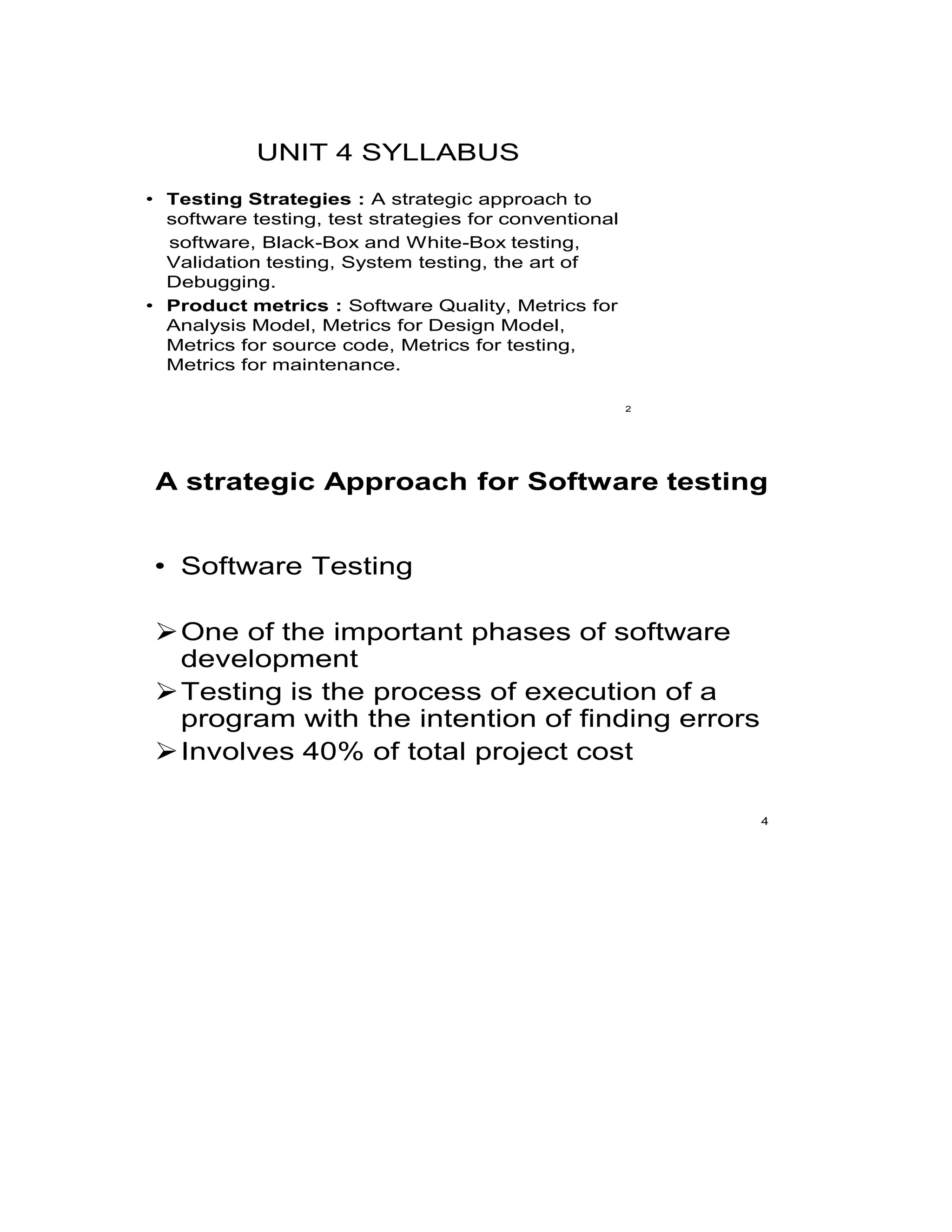
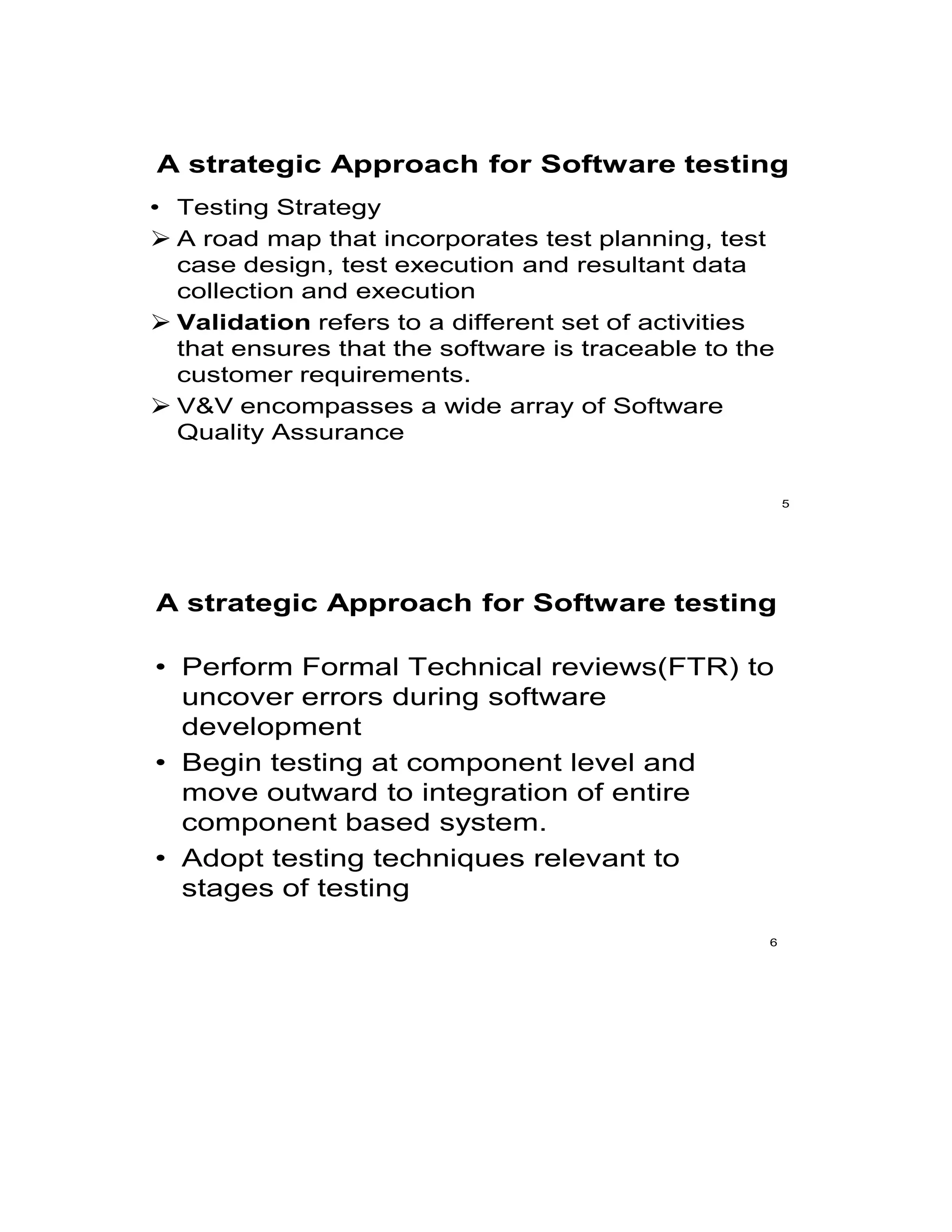

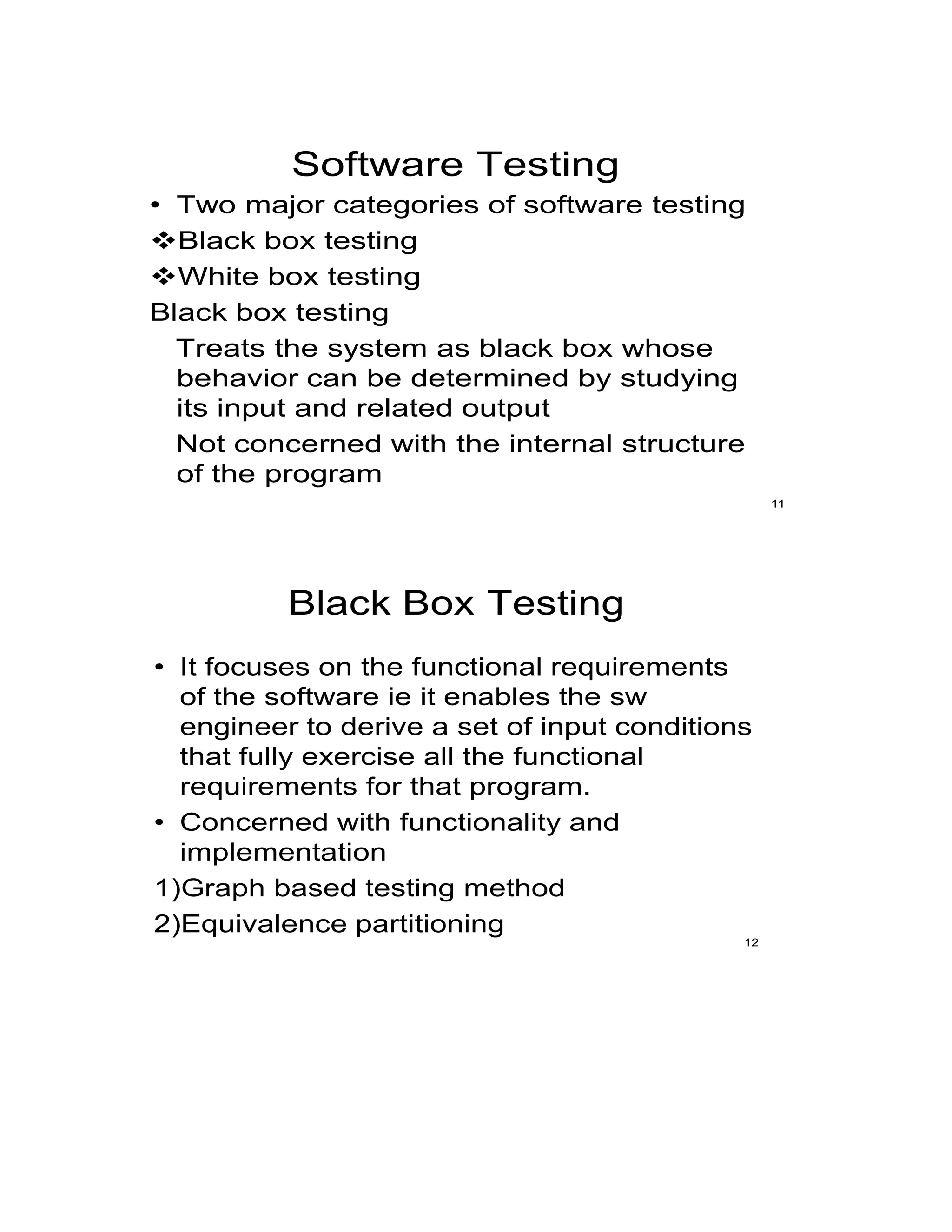

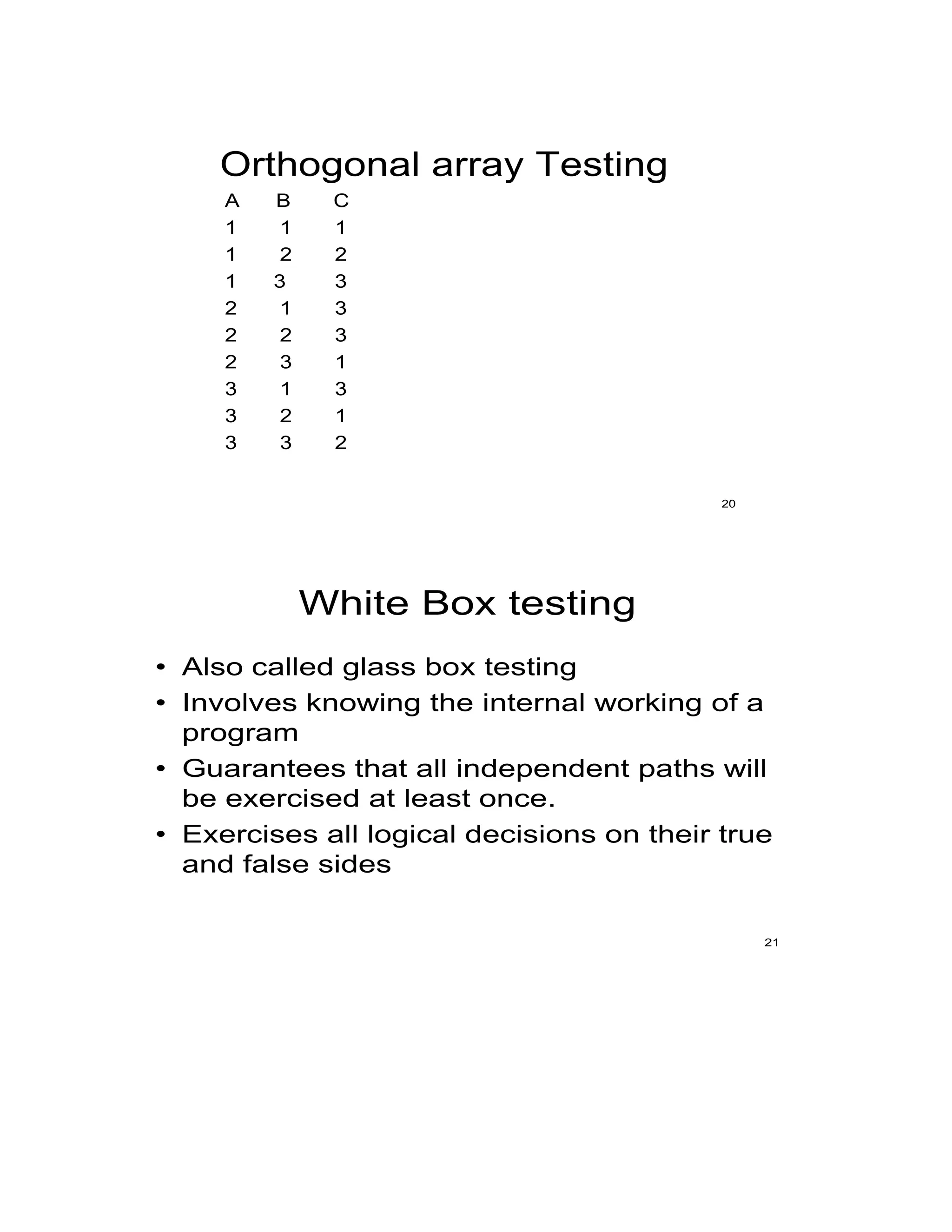
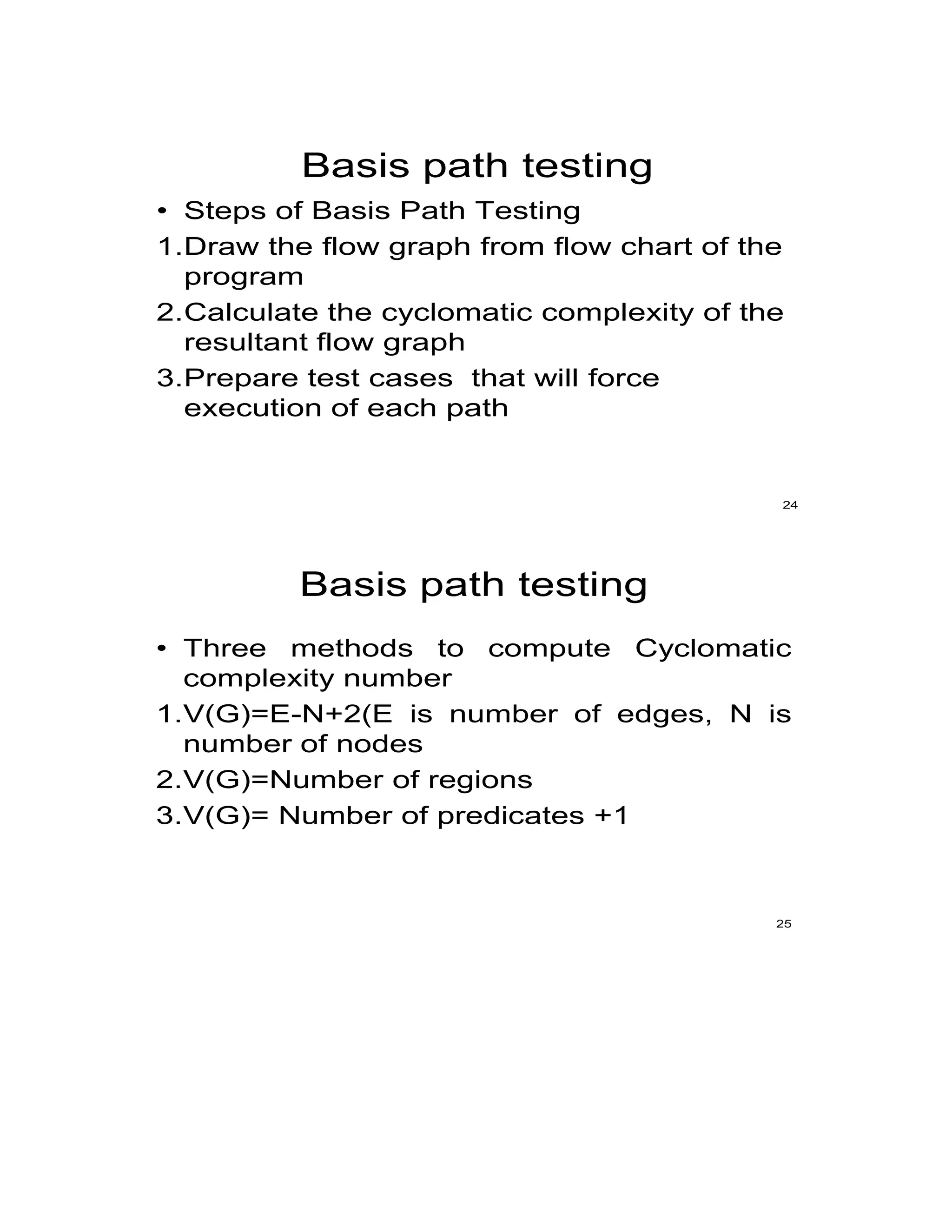


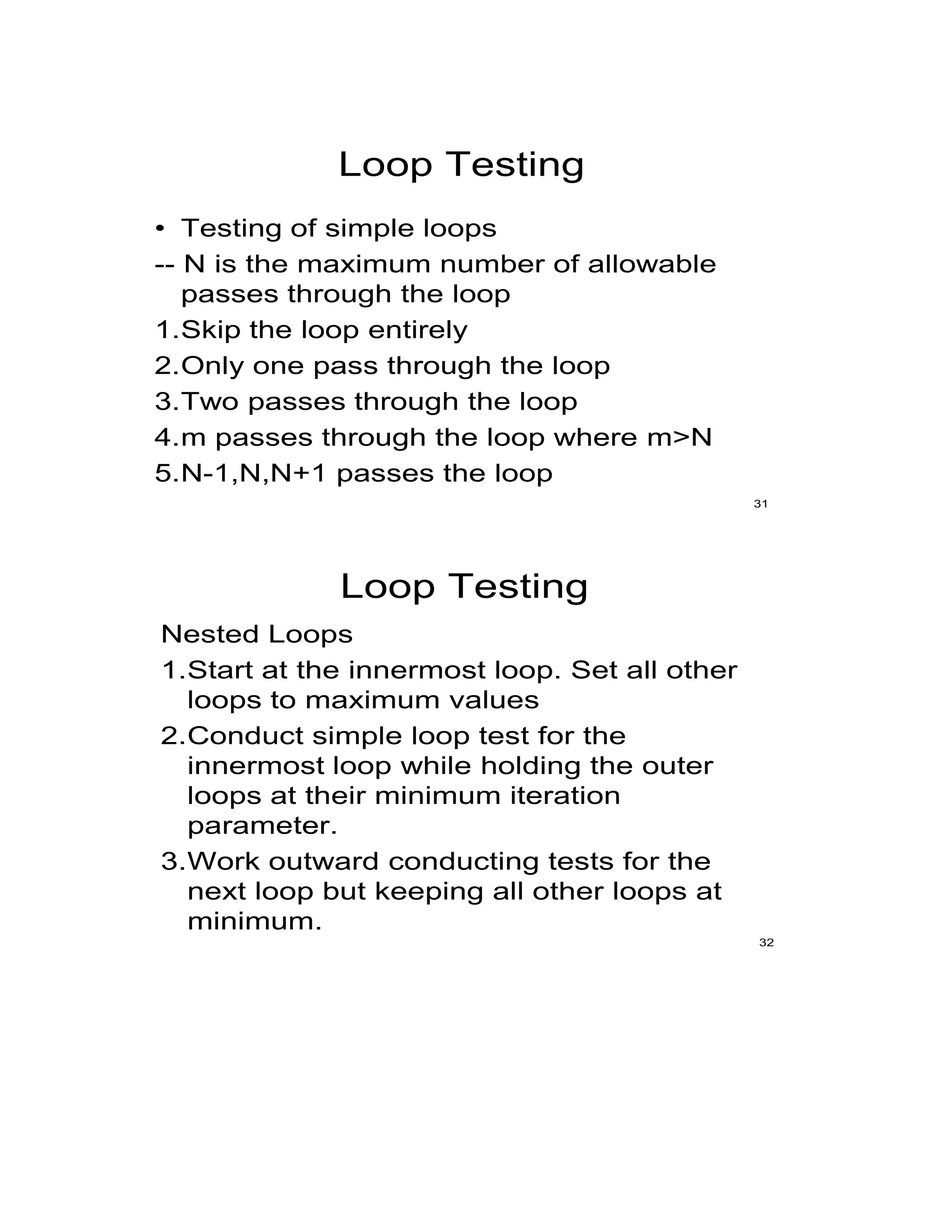

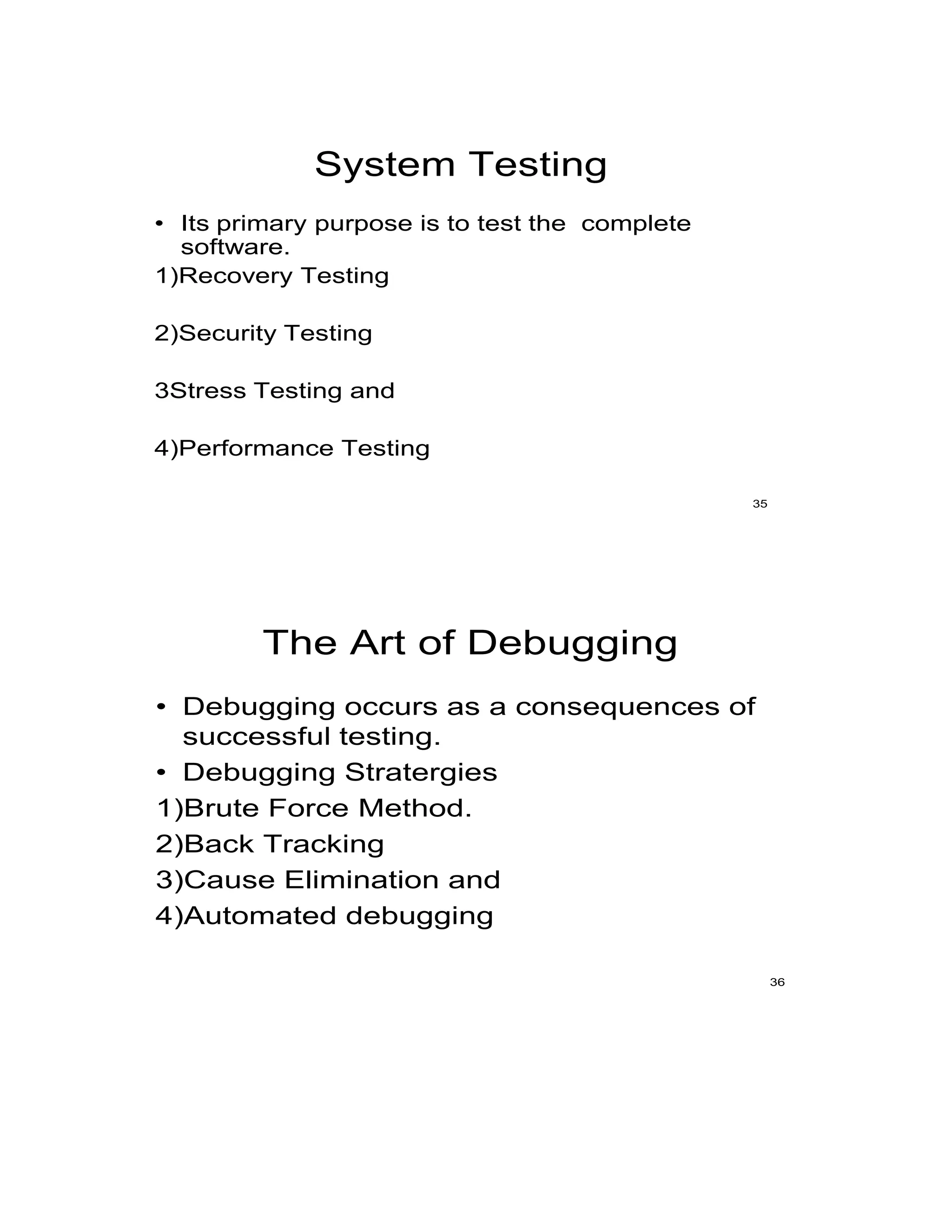




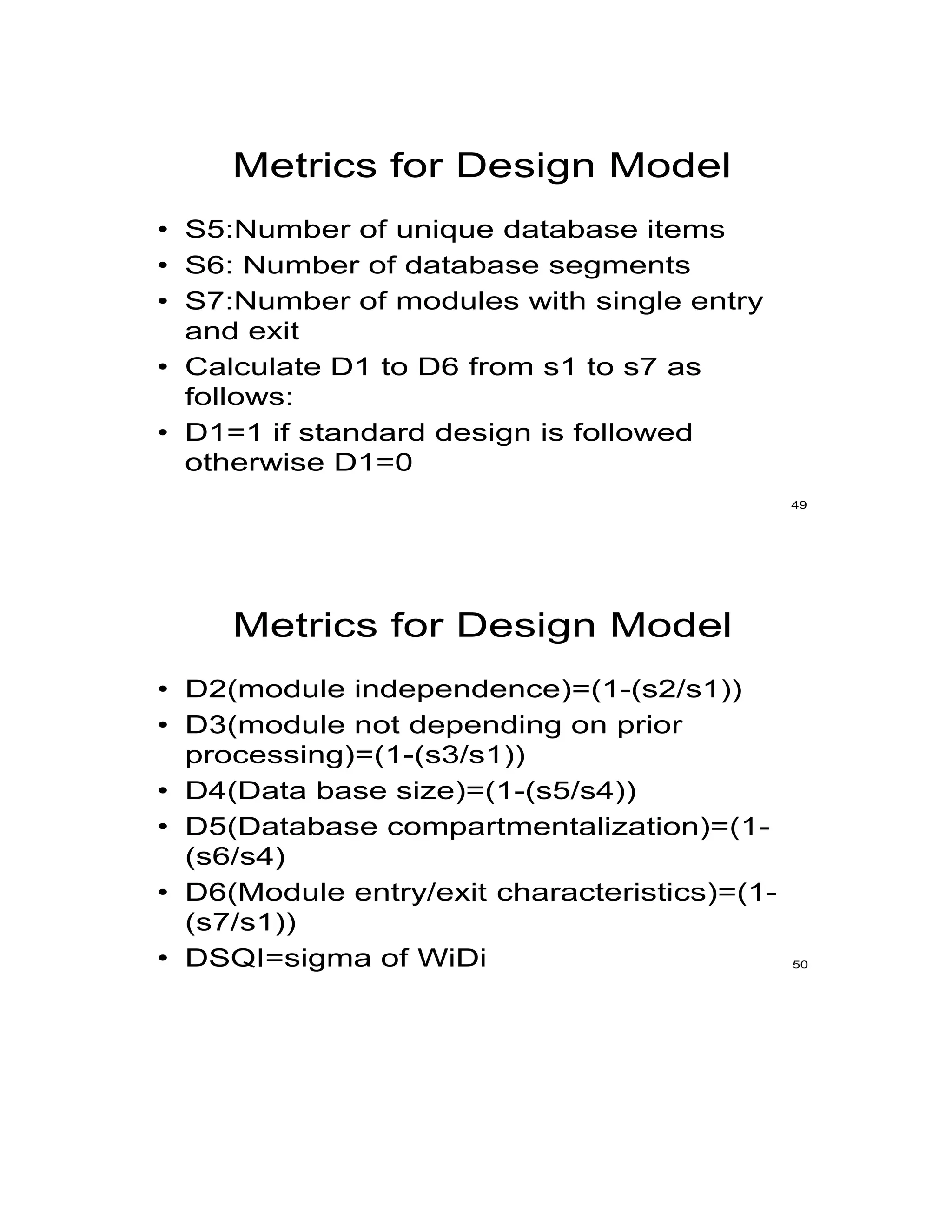
![METRIC FOR SOURCE CODE
• HSS(Halstead Software science)
• Primitive measure that may be derived after the
code is generated or estimated once design is
complete
• n1 = the number of distinct operators that appear
in a program
• n2 = the number of distinct operands that appear
in a program
• N1 = the total number of operator occurrences.
• N2 = the total number of operand occurrence.
• Overall program length N can be computed:
• N = n1 log2 n1 + n2 log2 n2
• V = N log2 (n1 + n2) 52
METRIC FOR TESTING
• n1 = the number of distinct operators that appear in a
program
• n2 = the number of distinct operands that appear in a
program
• N1 = the total number of operator occurrences.
• N2 = the total number of operand occurrence.
• Program Level and Effort
• PL = 1/[(n1 / 2) x (N2 / n2 l)]
• e = V/PL
53](https://image.slidesharecdn.com/seunit4-220314094622/75/Se-unit-4-18-2048.jpg)
![METRICS FOR MAINTENANCE
• Mt = the number of modules in the current release
• Fc = the number of modules in the current release that
have been changed
• Fa = the number of modules in the current release that
have been added.
• Fd = the number of modules from the preceding release
that were deleted in the current release
• The Software Maturity Index, SMI, is defined as:
• SMI = [Mt – (Fc + Fa + Fd)/ Mt ]
54](https://image.slidesharecdn.com/seunit4-220314094622/75/Se-unit-4-19-2048.jpg)